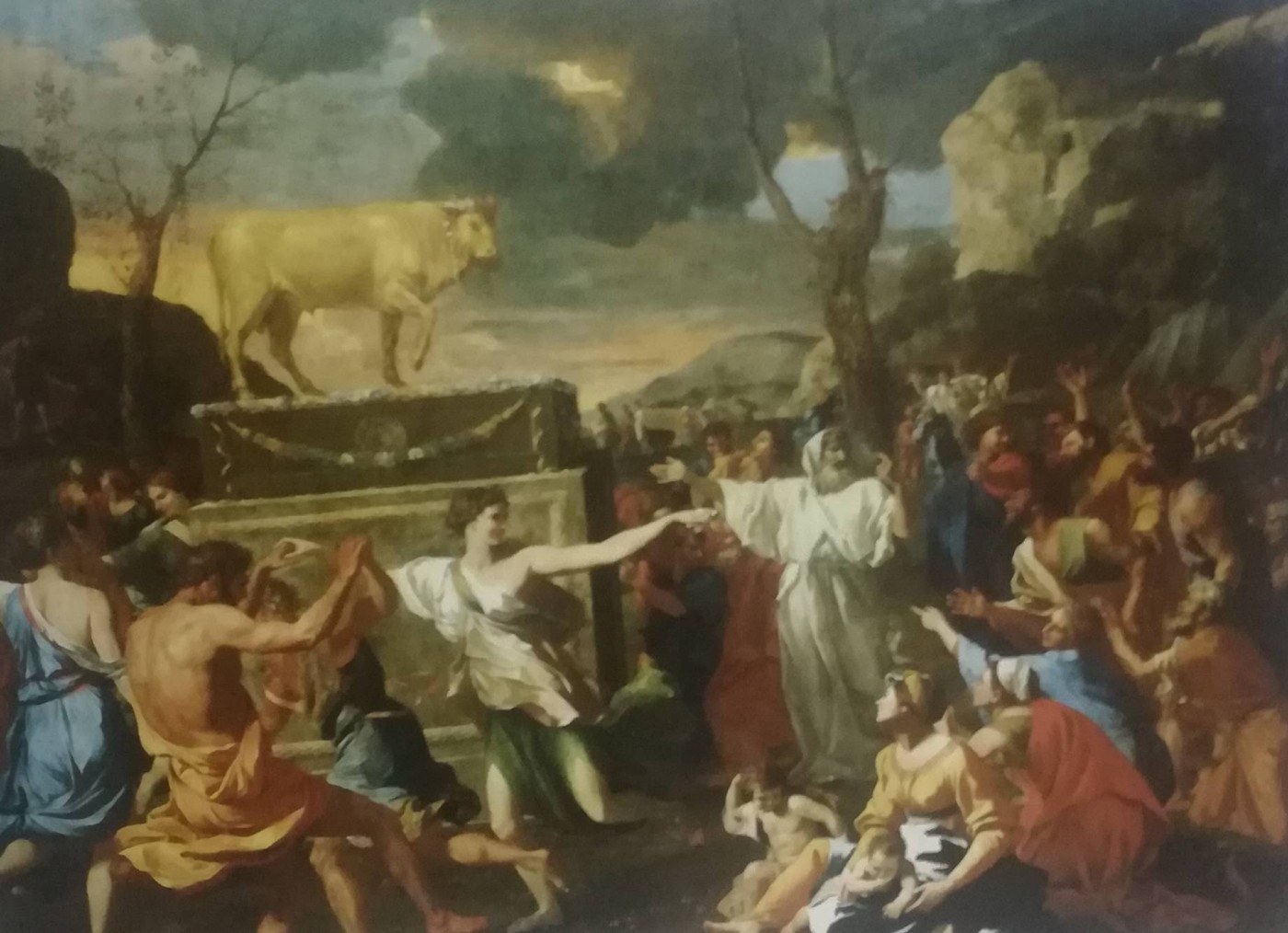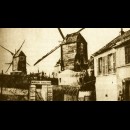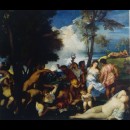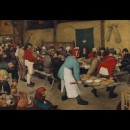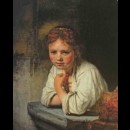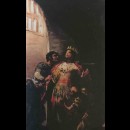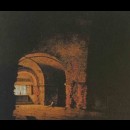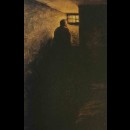Aaron, dressed in a long white tunic, invites the people to recognize the idol as the God of Israel; the crowd gathers around him. The celebration is at its height: after the rites and the meal, the Israelites give themselves over to fun and the dancing goes wild around the altar.
It is a neo-pagan, orgiastic dance. The voluptuous crossing of the dancers' legs and the dresses slipping from the women's shoulders reveal what the Bible means by fun: fornication. The chosen people have become an idolatrous people: and idolaters are slaves to the worst vices. Behind Aaron's right arm appear two Israelites who are strangers to the general frenzy: one bows his head in confusion, the other raises his gaze in terror, perhaps because they have noticed the threatening cloud. Perhaps they saw Moses coming from the mountain, as happens to the two women at the foot of the tree behind the altar.
Moses descends from Sinai in the company of Joshua; he has heard the choirs, listened to the dances and now, angrily, he breaks the tablets.
This canvas owes its excellent balance not to the rules of linear perspective but to the wise use of colors: thanks to the play of coloristic references, the canvas vibrates with an animation that marries well with the subject depicted
